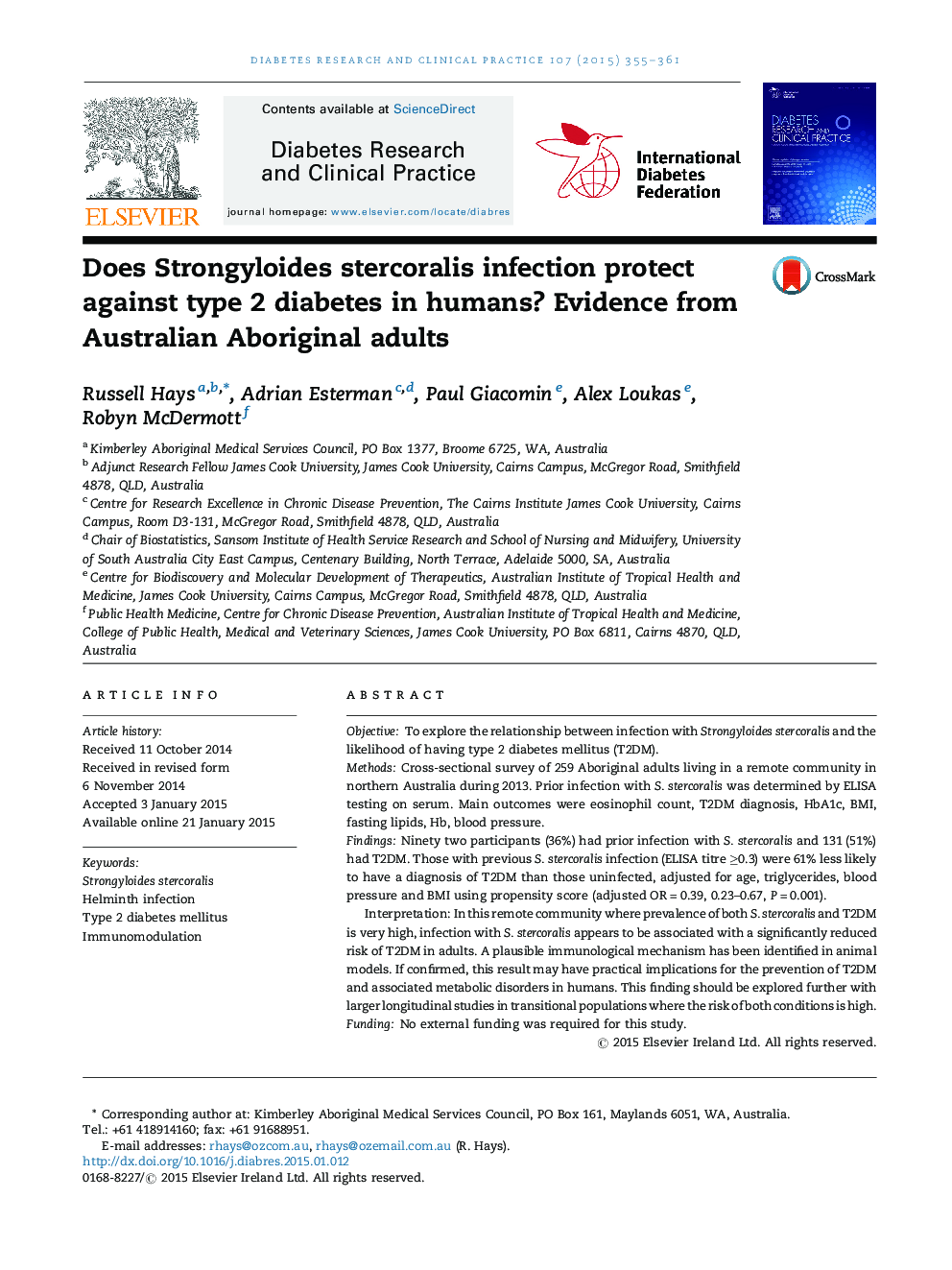| کد مقاله | کد نشریه | سال انتشار | مقاله انگلیسی | نسخه تمام متن |
|---|---|---|---|---|
| 2796369 | 1155596 | 2015 | 7 صفحه PDF | دانلود رایگان |

• We examine the association between Strongyloides stercoralis infection and type 2 diabetes mellitus in an Aboriginal community.
• A strong negative association between Strongyloides infection and type 2 diabetes mellitus is described.
• This negative association persists when corrected for age, sex and body mass index.
• Type 2 diabetes mellitus patients with Strongyloides infection are found to have significantly higher rates of eosinophilia.
• We suggest a plausible immunomodulatory model to explain these findings.
ObjectiveTo explore the relationship between infection with Strongyloides stercoralis and the likelihood of having type 2 diabetes mellitus (T2DM).MethodsCross-sectional survey of 259 Aboriginal adults living in a remote community in northern Australia during 2013. Prior infection with S. stercoralis was determined by ELISA testing on serum. Main outcomes were eosinophil count, T2DM diagnosis, HbA1c, BMI, fasting lipids, Hb, blood pressure.FindingsNinety two participants (36%) had prior infection with S. stercoralis and 131 (51%) had T2DM. Those with previous S. stercoralis infection (ELISA titre ≥0.3) were 61% less likely to have a diagnosis of T2DM than those uninfected, adjusted for age, triglycerides, blood pressure and BMI using propensity score (adjusted OR = 0.39, 0.23–0.67, P = 0.001).Interpretation: In this remote community where prevalence of both S. stercoralis and T2DM is very high, infection with S. stercoralis appears to be associated with a significantly reduced risk of T2DM in adults. A plausible immunological mechanism has been identified in animal models. If confirmed, this result may have practical implications for the prevention of T2DM and associated metabolic disorders in humans. This finding should be explored further with larger longitudinal studies in transitional populations where the risk of both conditions is high.FundingNo external funding was required for this study.
Journal: Diabetes Research and Clinical Practice - Volume 107, Issue 3, March 2015, Pages 355–361